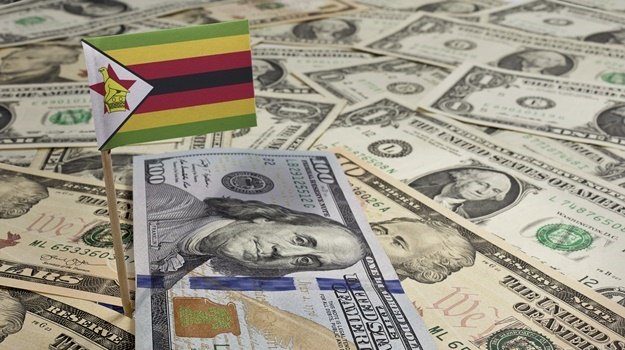RBZ should inject extra US$10m to stabilise economy
The Reserve Bank of Zimbabwe (RBZ) has been implored to continue with the market smoothening as analysts insist the market still has ZiG in excess of circa US$10 million even after the September foreign currency injections.
The RBZ says it injected US$64 million into the Interbank Market in September in a bid to save the ZiG currency from further depreciation on the back of spiralling parallel market exchange rates.
Currently, the parallel market is now trading at premiums above US$1: ZiG27 with some traders even demanding much higher premiums depending on demand and supply dynamics.
“Pursuant to smoothening the supply/demand mismatches in August/September 2024, the Reserve Bank has during the first two weeks of September 2024, injected US$24 million into the interbank foreign exchange market.
“Furthermore, guided by the obtaining pipeline demand at banks as at 18 September 2024, the Reserve Bank has, as of today (19 September 2024) sold into the interbank market an additional US$40 million. This has resulted in a cumulative foreign currency injection totalling US$64 million for the month of September 2024 alone,” RBZ Governor Dr John Mushayavanhu said recently.
He said the intervention is consistent with the Bank’s policy stance of ensuring that all bonafide foreign currency applications are honoured and with its role as a participant in the foreign exchange market and committed to providing timely payments into the seamless settlement of foreign payments in the interbank foreign exchange market.
Dr Mushayavanhu said: “The injection will effectively mop up significant liquidity in the market, thus further consolidating the stability of ZiG. Against this background, the Reserve Bank calls upon economic agents to comply with the stipulated foreign exchange framework in the pricing of goods and services.”
The RBZ action underscores the growing concern among economists and analysts regarding the implications of unchecked reserve money growth in the Zimbabwean economy.
Another layer of complexity surrounding Zimbabwe’s monetary policy was highlighted by analyst Tafara Mtutu.
According to Mtutu, the rapid increase in M1, which moved from ZiG 36 billion to ZiG 39 billion, further demonstrates the connection between money supply growth and currency devaluation.
“There is some truth to saying that the growth in ZiG money supply has actually caused the depreciation in the parallel market,” Mtutu stated.
He explained that while the ZiG is backed by gold, there is a discrepancy between the country’s gold production and the amount of ZiG in circulation.
“If you look at the tonnage of gold Zimbabwe has produced between April and August, and you calculate 5 percent of that being royalties, multiplying it by the average gold price over the same period, you get an additional US$70 million that could be used to back additional ZiG,” he explained.
However, Mtutu revealed that there is still an estimated ZiG130 to ZiG140 million unaccounted for when comparing ZiG growth to gold production figures.
“Therein lies the assumption that there is additional ZiG in the system that is not backed by anything.
That ZiG, being more than what is in the central bank’s vaults, is pushing the rate up because you have more ZiG chasing fewer USD now,” he concluded.
This discrepancy has further destabilised exchange rates, with excessive money supply placing upward pressure on parallel market rates.
Additional to the mineral royalties paid to the RBZ, the country also gets more foreign currency from export surrender portions. According to the bank, exporter surrender 25 percent of their earnings, which is then split evenly with 50 percent of the surrender portion going to reserves and the other 50 percent channelled to the foreign currency market.
Independent analyst, Farai Gwaka, agrees that reserve money growth plays a significant role in driving the recent devaluation of the Zimbabwean dollar (ZiG). However, he believes that additional factors are also at play.
“While reserve money growth has a significant bearing on the recent devaluation, there are more variables at play that have led to the recent local currency devaluation on the parallel market,” Gwaka noted.
His analysis points to a complex interplay of economic forces beyond just reserve money expansion, which have contributed to the worsening situation.
Gwaka expressed concerns over the central bank’s approach to controlling the exchange rate.
“Imposing a fixed exchange rate on the ZiG without the foreign currency to meet the demands of importers has never worked, based on monetary policy best practices and historical experience,” he said.
According to Gakwa, the Reserve Bank of Zimbabwe (RBZ) needs to allow market forces to determine the exchange rate to ensure a more efficient allocation of foreign currency within the economy.
One key issue, Gwaka noted, is the mismatch between exchange rate and inflation expectations, both of which remain alarmingly high.
“Exchange rate and inflation expectations, which are an important intangible in managing the exchange rate and inflation, are extremely high in Zimbabwe because of historical experience,” he said.
Gwaka emphasised that the RBZ needs to focus on confidence-building measures to stabilise the economy.
“The RBZ needs to do more work around confidence building at household and business levels. Policy consistency and predictability are key to confidence building.”
Despite recent efforts by the Government to increase the demand for the ZiG through taxation policies, Gwaka believes that demand for the currency remains weak across the economy.
“Most companies are failing to find a home for their growing ZiG balances, while the unavailability of foreign currency on the interbank market increases their restocking costs,” he explained.
“Households alike have limited homes for their ZiG, which is further compounded by the limited access to notes and coins for low-value transactions.”
These factors combined have placed immense pressure on the country’s currency and have made the need for sound fiscal and monetary policies more urgent than ever.
As the country continues to grapple with these economic challenges, experts are calling for greater transparency, consistency, and a renewed focus on building confidence within the economy.
-ebsienssweekl








